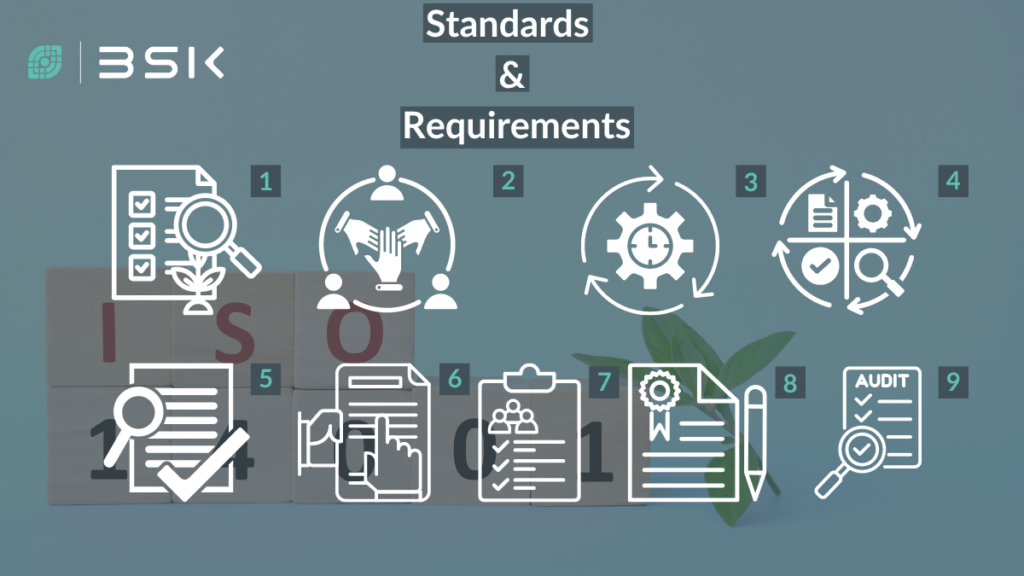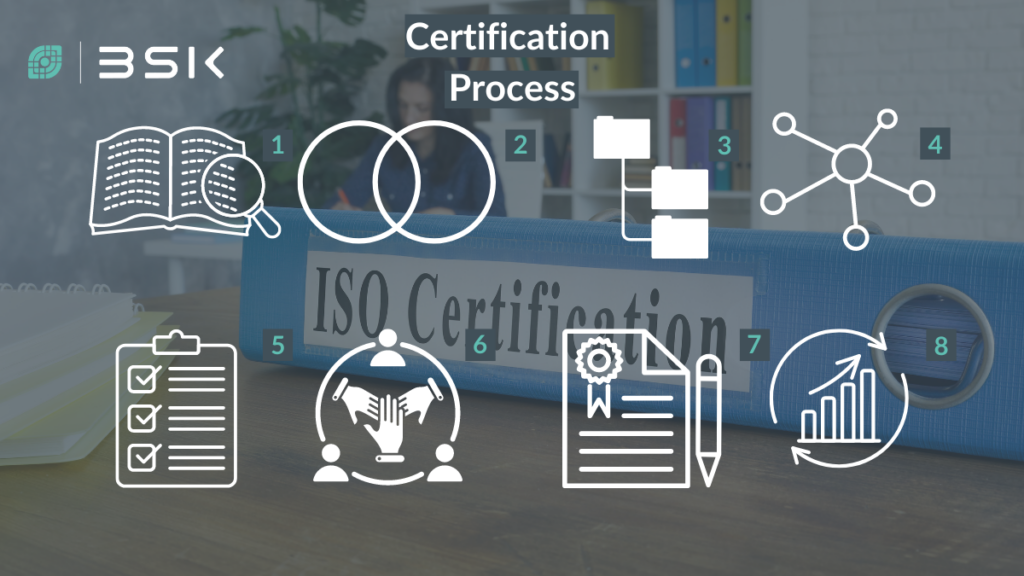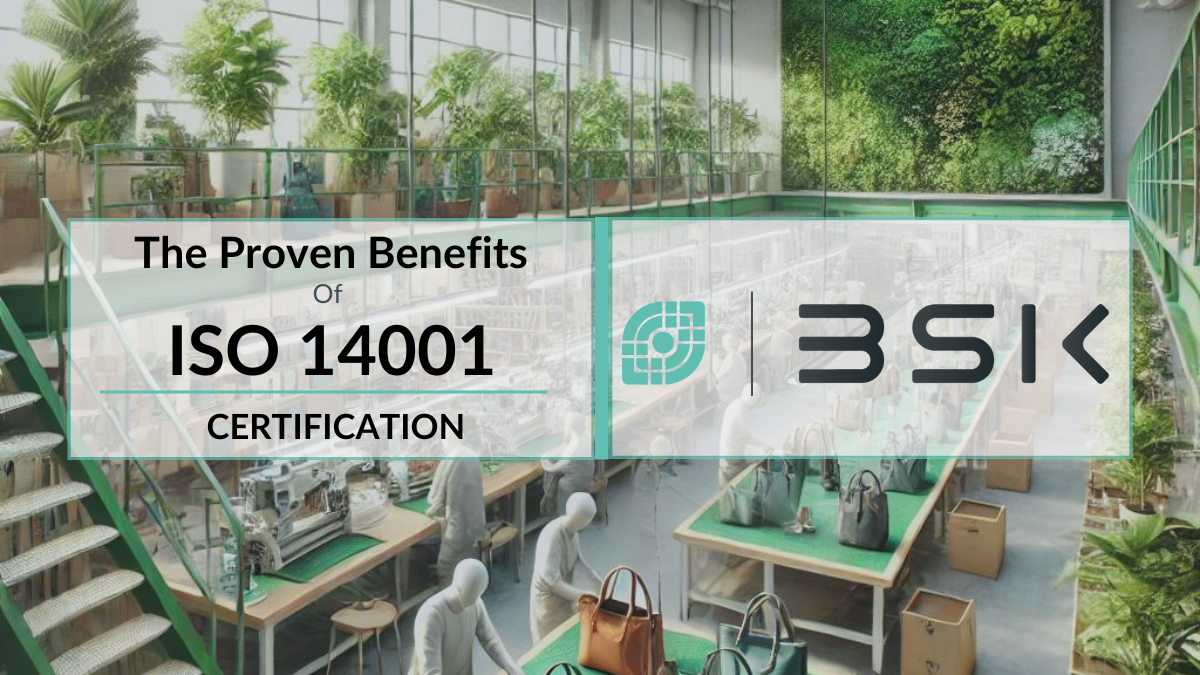ISO 14001 Certification, which sets a benchmark for Environmental Management Systems (EMS), plays a pivotal role in the increasingly competitive and environmentally conscious bag manufacturing industry. This certification not only serves as a testament to a company’s commitment to quality and environmental stewardship but also significantly enhances its credibility among consumers and stakeholders. By adhering to recognized standards like ISO 14001, manufacturers can assure their customers of the reliability, safety, and sustainability of their products. Achieving this certification underscores a manufacturer’s dedication to minimizing its environmental impact
Definition & Overview of ISO 14001
Alright, let’s clear up any confusion between the ISO 14001:2015 certification and the ISO 9001 certificate. They sound a bit similar but operate in completely different arenas! ISO 14001:2015 focuses on Environmental Management Systems (EMS). It’s all about helping organizations improve their environmental performance through a structured framework. This involves identifying, assessing, managing, and monitoring environmental aspects of operations to minimize waste and boost efficiency. It’s the go-to for companies looking to enhance their green credentials.
Focusing on quality management systems (QMS), ISO 9001 aims to help organizations ensure their products or services meet customer expectations and regulatory requirements. It emphasizes consistency, efficiency, and continual process improvement to boost customer satisfaction. On the other hand, ISO 14001 is geared towards environmental management systems (EMS), assisting organizations in minimizing their environmental footprint, adhering to environmental regulations, and enhancing their overall environmental performance. Each has its specific requirements and applicability but shares a common goal of certification and implementation to help organizations manage and improve different aspects of their operations. They are not mutually exclusive but are designed to be integrated, allowing for efficient management of both quality and environmental factors.
Advancing Environmental Stewardship
The certification aims to ensure compliance with laws and regulations, helping to avoid fines and sanctions. Additionally, it focuses on reducing environmental impact through strategic planning and management of environmental policies, covering all phases from product design to end-of-life recycling.
ISO 14001:2015 is designed for broad industry applications, regardless of organization size or type. It includes both product and service-oriented entities. This encompasses the manufacturing and services sectors, operating in both public and private domains. Its versatility and broad applicability make it a cornerstone certification. Globally, it positions organizations as committed to environmental management and performance improvement.

Standards and Requirements of ISO Certification 14001
For a bag factory aiming for ISO 14001 certification, understanding the ISO 14001:2015 standards is crucial. These focus on environmental performance. They use a structured framework. This framework incorporates risk-based thinking. It also emphasizes leadership engagement and supply chain management. The 14001 standard adopts the Annex SL structure. It features ten clauses. These are grouped into four main areas. The areas are Environmental Impact, Management Responsibility, Resource Management, and Measurement, Analysis, and Improvement.
- Assess Environmental Impact: Implement processes to reduce its environmental footprint. This includes managing waste. Also, it ensures resource efficiency. Apply these across manufacturing and supply chain operations. Not all areas might be applicable, but it’s crucial to identify and act on those.
- Engage Management and Leadership: Ensure the factory’s management team is actively involved in the EMS. They should show a commitment to environmental stewardship, making them accountable.
- Manage Resources Efficiently: Allocate resources, including human resources, infrastructure, and facilities, effectively to enhance environmental performance.
- Continuous Improvement: Utilize the EMS to monitor the factory’s operations. Measure and analyze their environmental impact. Ensure the system’s effectiveness. Aim for continual enhancement.
The certification process entails a thorough assessment. This audit is performed by a certified body. Its purpose is to evaluate the factory’s adherence. The focus is on compliance with the ISO 14001:2015 standards.
Understanding the Certification Audit Process
- Initial Review: An overview assessment to understand the existing environmental management practices and identify gaps against the ISO 14001 criteria.
- Documentation Review: Examine the factory’s documentation and records related to the EMS to ensure they meet the standard’s requirements.
- Pre-Assessment: An optional step that provides insights into the factory’s readiness for the formal audit.
- Certification Audit: Conducted in two stages. Stage 1 assesses the readiness and identifies any major non-conformities. Stage 2 is a more detailed evaluation of the EMS’s implementation and effectiveness, including interviews and observational inspection.
- Surveillance Audits: These are conducted periodically after certification is granted to ensure ongoing compliance and continuous improvement.
By navigating the assessment successfully, a bag factory can meet the ISO 14001:2015 criteria. Thus, it achieves certification. This demonstrates its commitment to reducing environmental impact. Additionally, it boosts sustainability in operations. This guarantees adherence to worldwide environmental norms. It also enhances operational efficiency. Moreover, it places the factory competitively in the market.
Benefits and Significance
ISO 14001 certification benefits bag factories and brands, enhancing their operational, environmental, and social performance. By adopting ISO 14001, companies can drastically reduce their ecological footprint. They achieve this through efficient resource management and waste reduction. Additionally, improved sustainability practices are emphasized. This comprehensive framework aids in identifying and managing environmental risks. Moreover, it fosters a culture of continuous improvement. Consequently, this leads to operational excellence and cost savings.
For bag manufacturers, obtaining ISO 14001 certification demonstrates a commitment to environmental stewardship and sustainable manufacturing processes. This commitment can greatly boost a factory’s reputation. Consequently, it becomes a more appealing partner. Brands and buyers seek suppliers with shared values. These include sustainability and social responsibility. Moreover, the emphasis on reducing environmental impact and improving resource efficiency resonates well with consumers, increasing customer trust and loyalty.
Leveraging ISO Certification
Brands that partner with ISO 14001-certified suppliers can leverage this certification to strengthen their market position. It is a powerful marketing tool communicating a brand’s dedication to environmental sustainability and responsible sourcing. This can be particularly advantageous in markets where consumers are increasingly conscious of their purchases’ environmental and social implications. Additionally, the certification can unlock new business opportunities. This is especially true in sectors or regions. Here, environmental compliance is essential for business.
Furthermore, ISO 14001 certification offers advantages in terms of sustainability, social responsibility, and quality management. It provides:
- A structured approach to managing environmental responsibilities.
- Ensuring compliance with relevant laws and regulations.
- Reducing the risk of penalties and sanctions.
By fostering a proactive approach, companies can address environmental challenges. This helps mitigate risks. Additionally, it capitalizes on sustainability opportunities. Ultimately, achieving a competitive advantage.
Overall, ISO 14001 certification boosts bag factories and brands. It enhances environmental performance and market competitiveness. Additionally, it builds customer trust. Importantly, it contributes to global sustainability efforts.

Certification Process
Organizations embark on a structured process that demands careful planning, implementation, and evaluation to obtain ISO certification. This journey begins with a thorough understanding of the ISO standards. It culminates in achieving accreditation and demonstrating compliance and commitment to the designated framework. Below, we outline the key steps in the certification process. We shed light on application procedures. Additionally, we cover documentation needs. We also discuss audits. Finally, we explore the anticipated timeline and resources required.
The Steps involved in obtaining the ISO 14001 Accreditation
Step 1: The first step in the certification process involves thoroughly understanding the specific ISO standard(s) sought for certification. This involves studying the requirements and how they apply to the organization’s operations, processes, and management systems.
Step 2:Organizations often perform a gap analysis. This helps identify discrepancies. They compare current processes against ISO standard requirements. This analysis provides a clear roadmap for the adjustments needed to achieve compliance.
Step 3: Documentation Developing and organizing the necessary documentation is critical. This documentation is the foundation of the management system. It details policies, procedures, and records. These demonstrate adherence to ISO standards.
Step 4: Implementation With the documentation in place, the next step is implementing the management system across the organization. This process entails training employees. Additionally, it involves establishing new processes. Moreover, ensuring all organizational aspects align with the ISO requirements is essential.
Enhancing Organizational Compliance and Efficiency
Step 5: Before seeking external certification, organizations conduct an internal audit. This process assesses the management system’s effectiveness. It also identifies areas for improvement. This internal review is essential for ensuring the system is fully compliant and functioning as intended.
Step 6: Based on internal audit findings, top management conducts reviews. They assess the management system’s suitability, adequacy, and effectiveness. This ensures compliance with ISO standards and organizational objectives.
Step 7: Certification Audit The certification process culminates in an external audit performed by a certified body. This audit unfolds in two stages. Firstly, there’s an initial review. Its purpose is to confirm the organization’s readiness for a thorough assessment. Then, a comprehensive evaluation follows. It focuses on the management system’s implementation and effectiveness.
Step 8: Continuous Improvement Achieving certification is still ongoing. ISO standards require continuous monitoring and improvement of the management system. Organizations must regularly review their systems, conduct internal audits, and implement necessary changes to maintain and enhance compliance.
Key Considerations for Achieving ISO Certification
Achieving ISO certification varies over time. It depends on the organization’s size and complexity. Also, the current compliance level matters. Additionally, allocated resources play a role. Generally, the process can take a few months to over a year. Organizations must allocate sufficient resources, including a dedicated team and budget, to develop, implement, and maintain the management system.
Industry Relevance
Obtaining ISO certification is a comprehensive process. It requires a deep understanding of standards. Meticulous planning is essential. Dedication to continuous improvement is crucial. By following these steps and allocating the necessary resources, organizations can achieve success. They can demonstrate their commitment to the highest standards of quality, safety, and efficiency.
Customers and stakeholders in these industries prioritize or require ISO 14001:2015 certification for a number of reasons
- It reassures them of the company’s compliance with legal and regulatory requirements, which is crucial in industries subject to stringent environmental regulations.
- It signals a commitment to corporate social responsibility, enhancing the company’s reputation and competitive advantage.
- It provides operational advantages. This includes cost savings from enhanced efficiency. Also, waste reduction. Additionally, it potentially lowers insurance premiums by reducing risks.
In the bag manufacturing industry context, the impact of ISO 14001:2015 certification can be profound. For instance, a bag manufacturing company might adopt the ISO 14001:2015 framework. This could lead to efforts to reduce material waste. Additionally, enhancing recycling processes might be a focus. Optimizing production processes could minimize offcut waste. Furthermore, using more recycled materials in their products could be a goal. Lastly, implementing efficient waste management systems might be considered. Such measures contribute to environmental conservation and lead to significant cost savings and improved operational efficiency. Moreover, the company can boost its brand image by achieving and advertising this certification. This approach appeals to environmentally conscious consumers and businesses. Consequently, it opens up new market opportunities.
Conclusion
Certifications are crucial in the bag manufacturing industry as a mark of quality, sustainability, and ethical manufacturing practices. These certifications don’t just boost a manufacturer’s credibility; they also significantly improve consumer trust and market competitiveness. Businesses must adhere to international standards through accreditation, a key way to stand out in a crowded marketplace.
Moreover, it’s highly recommended for bag manufacturers to seek out relevant certifications. This move isn’t solely about compliance; it’s strategic. It can enhance operations and customer satisfaction. It also opens new markets. Manufacturers should see certification as a key investment. It promises significant returns in reputation and growth. For bag manufacturers, certification is crucial. It boosts their business model. It also benefits the global economy and environment.
